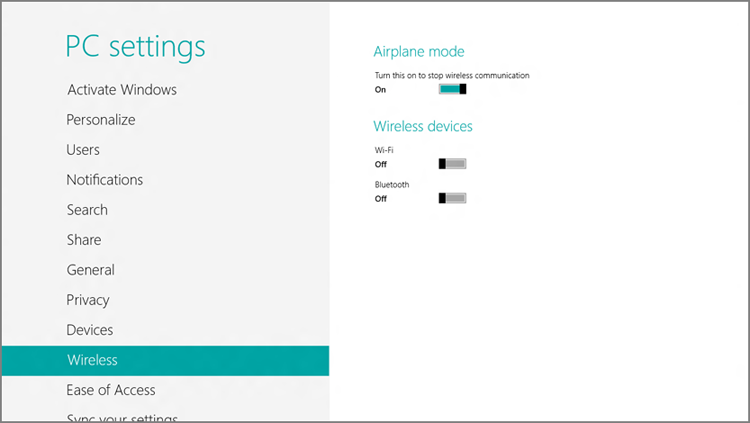Further Configuring a Cellular Data Connection
As with a wireless (Wi-Fi) connection,
you can right-click (or tap on and hold) a cellular data connection to
view additional options. These include the following:
We’re not sure why this isn’t enabled by
default for a cellular data connection, since it is such useful
information. Our advice is to enable it and, especially on connections
with a limited data allowance, keep an eye on usage.
- Show/Hide estimated data usage: This option is actually a toggle. When it’s enabled, you’ll see a data usage estimate whenever you select the connection.
- Set as metered/non-metered connection: This
option is enabled by default for cellular data connections, meaning
that Windows 8 correctly treats such networks as metered. A metered
connection is one that is limited to a certain amount of bandwidth for
a certain period of time, typically a month. Most wireless carriers
offer tiers of service, with monthly allotments of 250 MB, 2 GB, 5 GB,
and so on. So most users will want to ensure that their device isn’t
sopping up the available bandwidth each month. And this is where
Windows 8 provides some interesting functionality.
When you’re connected to the Internet with
just a metered connection, Windows 8 changes its behavior to be less
data hungry. For example, Windows Update will not automatically
download updates in the background, even if you have Auto Updates
enabled (as you should). There’s no exception to this: If Microsoft
feels that a security update is particularly important, it will enable
the downloading of that fix regardless of the connection type.
And just in case it’s not clear why this
ability to configure a connection as metered is important, consider
this example:
- Forget/Remember this network: Cellular
data networks are configured to be remembered by default. If you’d like
to forget the network for some reason, you can do so.
- View connection properties: Choosing
this option displays an old-school desktop-type configuration window,
as it does for wireless networks. However, there is one useful option
in this window when used with a cellular data connection: You can
enable a PIN for the PC or device’s SIM card to help protect against
theft.
Comparing this list to that of a wireless network, you may have noticed that the Turn sharing on or off option is unavailable. This
makes sense since a cellular data connection, by definition, cannot
connect you to your local network. It is instead used to connect to the
Internet directly and thus will always be public.
Using Airplane Mode
Like a smartphone, Windows 8 actually
supports a useful Airplane Mode toggle that instantly disables all of
the wireless (Wi-Fi and cellular data) connections in your PC or device
without requiring you to fumble with multiple interfaces, as you did in
previous Windows versions.
You access Airplane Mode from two different
locations. The easiest is the Networks pane (Winkey + I, Network). As
you can see in Figure 7,
it’s the toggle right at the top of the pane. So if you’re on an
airplane, literally, or wish to otherwise disengage the various
antennas in the device to preserve battery life, this is your go-to
toggle.
You can also access Airplane Mode from PC Settings under the Wireless entry. As shown in Figure 8,
this interface lets you toggle Airplane Mode as you would from the
Networks pane, but you can also individually toggle the availability of
specific wireless (Wi-Fi plus cellular data) connections.
This is dramatically simpler than with previous
Windows versions. Before, you had to find the Network Connections
explorer and then manually disable each device individually.
Figure 8: From PC Settings, you can enable Airplane Mode or configure individual wireless connections.
